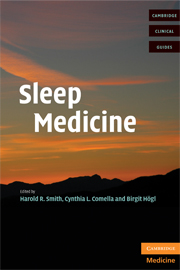Foreword
Published online by Cambridge University Press: 08 August 2009
Summary
Sleep in medicine has been important since the days of Hippocrates, when he wrote in Aphorism LXXI: SOMNUS, VIGILIA, UTRAQUE MODUM EXCEDENTIA, MORBUS – Disease exists, if either sleep or watchfulness be excessive. Sleep and its disorders were treated by poets, visionaries, medicine men, healers, psychiatrists – and by a few family physicians who since time immemorial had observed the influence of sleep in physical, mental, and emotional health. And yet, sleep was not established as a scientifically based medical discipline until the middle of the twentieth century, barely fifty years ago. It was the probing of the brain with recently developed EEG techniques that opened the window to the magnificent world of sleep. Searching for the source of dreams, like searching for the fountain of youth in centuries past, led to the discovery of a myriad of disorders that had been unimaginable only a few decades before. Today these conditions are placed in the forefront of medicine. Sleep apnea, restless legs syndrome, the insomnias, the hypersomnias, REM sleep behavior disorder, and so many others have become everyday diagnoses in clinical practice. The disorders of sleep have grown exponentially in complexity. The new International Classification of Sleep Disorders (ICSD-2) incorporates more than 80 recognized sleep diagnoses. To understand and be familiar with so many alterations of human physiology one has to delve into psychology, psychiatry, neurology, pulmonary medicine, cardiology, pediatrics, dentistry, and otorhinolaryngology.
- Type
- Chapter
- Information
- Sleep Medicine , pp. xiii - xivPublisher: Cambridge University PressPrint publication year: 2008



